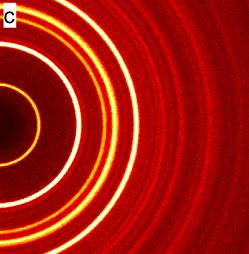The HDMI Forum is using CES — the annual showcase of all things home theater — to announce the new HDMI 2.2 specification. In a press release this morning, the trade association confirmed that the new spec will up total bandwidth significantly to a new high of 96Gbps. And yes, that means the introduction of an “Ultra96” HDMI cable that “enables all the HDMI 2.2 specification features.”
“Higher resolutions and refresh rates will be supported and more high-quality options will be provided,” the HDMI Forum said in its release. An example of an HDMI 2.2 cable (below) calls out some of those, including 4K at up to 480Hz, 8K at up to 240Hz, and 10K at 120Hz. Current HDMI cables can already pass 4K at 120Hz, so I doubt most people will feel any temptation to upgrade for years to come. And you’ll need content for any of these higher resolutions to be worthwhile, and there’s still a dearth of native 8K entertainment out there.
But with many TVs now offering 4K at up to 144Hz, and as consumers gravitate towards larger screens, the HDMI Forum sees ample reason to keep pushing forward.
There is at least a more helpful aspect of this spec for everyone: HDMI 2.2 includes a “Latency Indication Protocol (LIP) for improving audio and video synchronization, especially for multiple-hop system configurations such as those with an audio video receiver or soundbar.” In my experience, HDMI 2.1 and eARC have mostly resolved frustrating audio / video sync issues, but they can still pop up as a frustration depending on your setup. Apparently HDMI 2.2 will go further in keeping everything lined up and keeping this headache in the past.
Interestingly, the HDMI Forum is already anticipating tariff issues and has implemented an extensive certification program that includes anti-counterfeit labeling on packaging. You certainly can’t miss the Ultra96 badging.
HDMI 2.2 will be released in the first half of this year and be widely available “to all HDMI 2.x adopters.” Your TV and external devices will need to support the specification in order to unlock that new level of bandwidth, so we’re just starting down what’s inevitably going to be a long road.
Make it work on Linux please
The hacker known as Linux has used HDMI to illegally steal movies. It will never be supported. You will never have HDMI 2.1, let alone 2.2
Curse you hacker known as Linux! How could you keep this from us by selfishly using HDMI to illegally steal movies!
Guess I’ll keep using the superior DP then. 🤷
Can anyone ELI5 how we are able to release new standards all the time? Are there technological advances that allow more bandwidth? If not, why not start with higher bandwidth?
Going for higher bandwidth tends to increase signal interference. There are various ways to deal with that, most of which cost money. For example, most high speed data cables use twisted pairs that help cancel out interference. To go faster, the twists need to be tighter, and that’s more expensive to make.
If there is no customer demand for those use cases, then there’s no reason to force a more expensive cable, connector, or signalling electronics just so you can meet specs.
Can someone force cable manufacturers to print the bandwidth or at least the version on the fucking cable already?!
Sounds like “burdensome regulation” to me.
Communist.
/s
Half of them will print the highest bandwidth regardless of the actual cable’s capabilities so that won’t help.
The options are to hope the writing is accurate, or to change the connector to break cross-compatibility.
Buy cables from reputable sources and return anything that doesn’t do what it’s advertised to do, I guess. I like having as few ports as possible! Haha
Nothing stops them from putting the “new” connector on a shitty cable either.
At this point we should just swing to 10 gbps sfp+ ports, it’s faster, it’s lower latency, it’s upgradable to 100gbps, it travels over fiber, but most importantly, it is a network protocol and we can use it for our Internet.
If a fiber transceiver supports 100 GbE it’s not really sensible to refer to it as 10 GbE.
Also, is it cheaper? I highly doubt it…
100gbit DAC cables are widely available for $30, mch cheaper than these 96gbit cables will be. Optical cables are $120 due to the transceivers, but also reasonable. You can also use off the shelf fiber so your length is infinite with the optical cables.
Instead, they’re trying to force everything to USB with DP Alt mode which has a ton of the same annoyances…but at least USB C is flippable I guess.
HDMI 2.1 cables have 19 wires and USB 3.2 has 13 or 14 (can’t remember) so they’re really finicky and fragile. Fiber has 1 or 2 and is VERY rugged in comparison…you can literally tie a knot in a fiber cable and it’ll still work.
Plus with fiber, if your AVR blows up, it can’t take the other equipment out with it since it’s electrically isolated.
Fiber is also cheap cheap cheap!
Fiber is thin and easy to route.
Fiber can ALSO be shortened, extended, etc. in the field.
The only downside is the cost of the splicing tools (and the cleanliness required)
And I guess SFP connectors are pretty gnarly. But if it was aimed at consumers, they could slap a nice rubberized coat on it…
Man, I love fiber.
Fiber needs like an 8” minimum bend radius… I think that’s for just a single strand.
That would be awesome, but the fucking corpo bullshit cunts need proprietary bullshit cause “piracy”
I’m still pissed at the HDMI forum for banning Linux from using HDMI 2.1
sfp+ can do audio and video? I’ve only ever used it for networking
1s and 0s, you can do anything with em
The neat thing about digital stuff is that you can put anything through anything.









